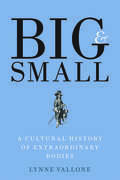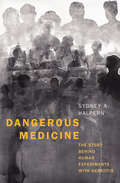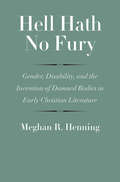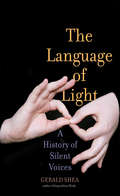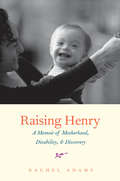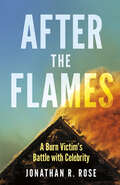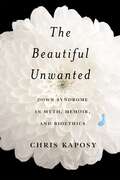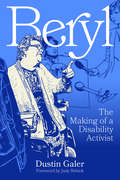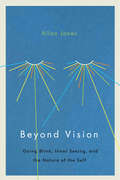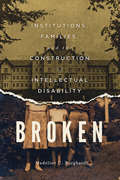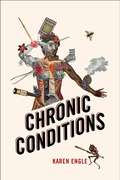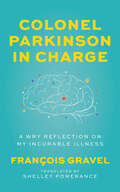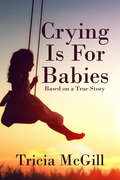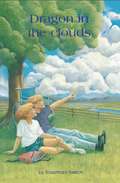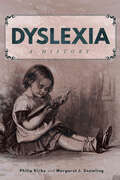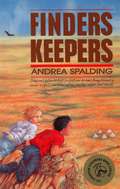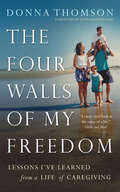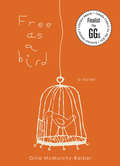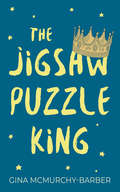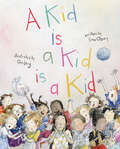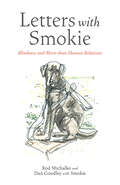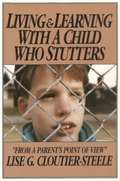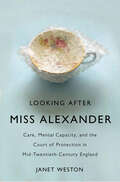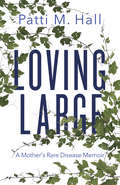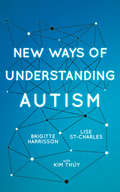- Table View
- List View
Big and Small: A Cultural History of Extraordinary Bodies
by Lynne ValloneA groundbreaking work that explores human size as a distinctive cultural marker in Western thought Author, scholar, and editor Lynne Vallone has an international reputation in the field of child studies. In this analytical tour-de-force, she explores bodily size difference—particularly unusual bodies, big and small—as an overlooked yet crucial marker that informs human identity and culture. Exploring miniaturism, giganticism, obesity, and the lived experiences of actual big and small people, Vallone boldly addresses the uncomfortable implications of using physical measures to judge normalcy, goodness, gender identity, and beauty. This wide-ranging work surveys the lives and contexts of both real and imagined persons with extraordinary bodies from the seventeenth century to the present day through close examinations of art, literature, folklore, and cultural practices, as well as scientific and pseudo-scientific discourses. Generously illustrated and written in a lively and accessible style, Vallone’s provocative study encourages readers to look with care at extraordinary bodies and the cultures that created, depicted, loved, and dominated them.
Dangerous Medicine: The Story behind Human Experiments with Hepatitis
by Sydney A. HalpernThe untold history of America&’s mid-twentieth-century program of hepatitis infection research, its scientists&’ aspirations, and the damage the project caused human subjects &“Sydney Halpern has written a compelling, if unsettling, history of hepatitis research during World War II and the Cold War. It will become a must-read for anyone interested in bioethics and medical history.&”—Susan E. Lederer, author of Subjected to Science and Flesh and Blood From 1942 through 1972, American biomedical researchers deliberately infected people with hepatitis. Government-sponsored researchers were attempting to discover the basic features of the disease and the viruses causing it, and to develop interventions that would quell recurring outbreaks. Drawing from extensive archival research and in-person interviews, Sydney Halpern traces the hepatitis program from its origins in World War II through its expansion during the initial Cold War years, to its demise in the early 1970s amid an outcry over research abuse. The subjects in hepatitis studies were members of stigmatized groups—conscientious objectors, prison inmates, the mentally ill, and developmentally disabled adults and children. The book reveals how researchers invoked military and scientific imperatives and the rhetoric of a common good to win support for the experiments and access to recruits. Halpern examines the participants&’ long-term health consequences and raises troubling questions about hazardous human experiments aimed at controlling today&’s epidemic diseases.
Hell Hath No Fury: Gender, Disability, and the Invention of Damned Bodies in Early Christian Literature (The Anchor Yale Bible Reference Library)
by Meghan R. HenningThe first major book to examine ancient Christian literature on hell through the lenses of gender and disability studies Throughout the Christian tradition, descriptions of hell&’s fiery torments have shaped contemporary notions of the afterlife, divine justice, and physical suffering. But rarely do we consider the roots of such conceptions, which originate in a group of understudied ancient texts: the early Christian apocalypses. In this pioneering study, Meghan Henning illuminates how the bodies that populate hell in early Christian literature—largely those of women, enslaved persons, and individuals with disabilities—are punished after death in spaces that mirror real carceral spaces, effectually criminalizing those bodies on earth. Contextualizing the apocalypses alongside ancient medical texts, inscriptions, philosophy, and patristic writings, this book demonstrates the ways that Christian depictions of hell intensified and preserved ancient notions of gender and bodily normativity that continue to inform Christian identity.
The Language of Light: A History of Silent Voices
by Gerald SheaA comprehensive history of deafness, signed languages, and the unresolved struggles of the Deaf to be taught in their unspoken tongue Partially deaf due to a childhood illness, Gerald Shea is no stranger to the search for communicative grace and clarity. In this eloquent and thoroughly researched book, he uncovers the centuries-long struggle of the Deaf to be taught in sign language—the only language that renders them complete, fully communicative human beings. Shea explores the history of the deeply biased attitudes toward the Deaf in Europe and America, which illogically forced them to be taught in a language they could neither hear nor speak. As even A.G. Bell, a fervent oralist, admitted, sign language is "the quickest method of reaching the mind of a deaf child." Shea’s research exposes a persistent but misguided determination among hearing educators to teach the Deaf orally, making the very faculty they lacked the principal instrument of their instruction. To forbid their education in sign language—the “language of light”—is to deny the Deaf their human rights, he concludes.
Raising Henry
by Rachel AdamsRachel Adamss life had always gone according to plan. She had an adoring husband, a beautiful two-year-old son, a sunny Manhattan apartment, and a position as a tenured professor at Columbia University. Everything changed with the birth of her second child, Henry. Just minutes after he was born, doctors told her that Henry had Down syndrome, and she knew that her life would never be the same. In this honest, self-critical, and surprisingly funny book, Adams chronicles the first three years of Henrys life and her own transformative experience of unexpectedly becoming the mother of a disabled child. A highly personal story of one familys encounter with disability, "Raising Henry" is also an insightful exploration of todays knotty terrain of social prejudice, disability policy, genetics, prenatal testing, medical training, and inclusive education. Adams untangles the contradictions of living in a society that is more enlightened and supportive of people with disabilities than ever before, yet is racing to perfect prenatal tests to prevent children like Henry from being born. Her book is gripping, beautifully written, and nearly impossible to put down. Once read, her familys story is impossible to forget.
After the Flames: A Burn Victim's Battle With Celebrity
by Jonathan R. Rose“A fast-paced, compelling narrative that goes far beyond the headlines.” — KEVIN DONOVAN, author of The Billionaire MurdersFor Joey Philion, surviving the fire was only the beginning.On the morning of March 10th, 1988, in Orillia, Ontario, a house fire engulfed fourteen-year-old Joey Philion in flames. He suffered third degree burns on 95 percent of his body. Doctors didn’t think he would make it through the night.After the Flames is about one of the world's most famous burn victims: his incredible survival, his nightmarish path to recovery that helped revolutionize medical treatment for burn victims worldwide, the fame thrust upon him after he was declared a hero from the media, and the tumultuous years that followed, most of which were spent under the microscope of an unforgiving public eye.The story also follows Joey’s family, including his mother Linda, stepfather Mike, and younger brother Danny, all of whom endured their own tremendous hardships in the wake of a fire that changed their lives forever.
The Beautiful Unwanted: Down Syndrome in Myth, Memoir, and Bioethics
by Chris KaposyPrenatal genetic testing has changed the circumstances under which parents choose what pregnancies to carry to term. Some have predicted that as a result of parents’ choices, people with Down syndrome will disappear from our communities in the near future. Chris Kaposy, a bioethicist who has a son with Down syndrome, reflects on parenting his son in the midst of this supposed disappearance.Writing from a pro-choice, disability-positive perspective, Kaposy presents some of the decades-old bioethical controversies involving children with Down syndrome, illustrating a prehistory of disappearance that has shaped current attitudes toward intellectual disability. Layered throughout this history are elements of Kaposy’s personal experience with his son and family. Transcending monograph and memoir, The Beautiful Unwanted draws creatively upon the past and the present, upon myth, history, science, and personal stories, to present the world of families that include children with Down syndrome from a series of uncommon perspectives. This account encompasses the changeling myths of Newfoundland, the “discovery” of Down syndrome by John Langdon Down and Jérôme Lejeune, and the twentieth-century experience of institutionalization, as well as recent advances in reproductive technology.We must recognize that we have some control over the future, Kaposy argues, and we must ask what kind of future we want for those who have intellectual disabilities. The Beautiful Unwanted poses this question in a way that is engaging, often bewildering, and always fascinating.
Beryl: The Making of a Disability Activist
by Dustin GalerBeryl Potter was a reserved working-class mother of three living a decent life, or so it seemed, when a harmless slip and fall marked the unravelling of everything that she had known about herself and the world around her. Over the course of six years, she endured unimaginable pain. As doctors raced to save her life, her limbs and eyesight were taken from her one by one. In the span of a few years, she lost nearly half her body, her financial security, her home, her husband, and any semblance of a recognizable future. A survivor of more than one hundred surgeries, a dangerous opioid addiction, and multiple suicide attempts, Beryl Potter devoted herself to bettering the lives of other people with disabilities and made a tremendous contribution to disability awareness from the 1970s to 1990s. In this unparalleled biography, Dustin Galer demonstrates how Beryl Potter seemed to crack the code of the social system that oppressed her. By wading into the weeds of her complicated life before and after her accident, Galer leaves readers with a complex portrait of a woman who defied and challenged gender and disability norms of her time, paving the way for disability justice.
Beyond Vision: Going Blind, Inner Seeing, and the Nature of the Self
by Allan JonesIn this unique and exhilarating autobiography, Allan Jones – Canada’s first blind diplomat – vividly describes how an untreatable eye disease slowly decimated his visual world, most challengingly during his postings in Tokyo and New Delhi, and how he discovered and took to heart the revelatory Indian philosophy that changed his life. Advaita Vedanta, the most iconoclastic and liberating of the classical Indian philosophies, profoundly altered the author’s experience of self and world. He found that the true self, as distinct from the individual ego, far exceeds the boundaries of individuality. It lies beneath sightedness or blindness and is absolutely unaffected by the latter. This welcome shift of perspective was reinforced by startling discoveries in contemporary physics, evolutionary biology, and developmental psychology that are fully consistent with Advaitic metaphysics. As for the practical applications of metaphysics, this book demonstrates step by step how Advaitic insight and practice significantly reduce physical and psychological tension. The most telling examples have to do with adjustments compelled by extreme circumstances. Thus Jones describes how he drew upon Advaitic mindfulness techniques to maintain his white cane mobility skills in the teeth of permanent spinal, nerve, and muscle pain. The arc of Beyond Vision moves from the claustrophobically personal to the openness of the transpersonal. It begins in a dysfunctional family background, breaking out into a full life encompassing an adventurous foreign service career, spiritual exploration, and an unconventional kind of marital love.
Broken: Institutions, Families, and the Construction of Intellectual Disability (McGill-Queen's/Associated Medical Services Studies in the History of Medicine, Health, and Society #50)
by Madeline C. BurghardtAfter 133 years of operation, the 2009 closure of Ontario's government-run institutions for people with intellectual disabilities has allowed accounts of those affected to emerge. Madeline Burghardt draws from narratives of institutional survivors, their siblings, and their parents to examine the far-reaching consequences of institutionalization due to intellectual difference. Beginning with a thorough history of the rise of institutions as a system to manage difference, Broken provides an overview of the development of institutions in Ontario and examines the socio-political conditions leading to families' decisions to institutionalize their children. Through this exploration, other themes emerge, including the historical and arbitrary construction of intellectual disability and the resulting segregation of those considered a threat to the well-being of the family and society; the overlap between institutionalization and the workings of capitalism; and contemporaneous practices of segregation in Canadian history, such as Indian residential schools. Drawing from people's direct, lived experiences, the second half of the book gathers poignant accounts of institutionalization's cascading effects on family relationships and understandings of disability, ranging from stories of personal loss and confusion to family breakage. Adding to a growing body of work addressing Canada's treatment of historically marginalized peoples, Broken exposes the consequences of policy based on socio-political constructions of disability and difference, and of the fundamentally unjust premise of institutionalization.
Chronic Conditions
by Karen EngleImagine a house whose wiring is spliced and patchy with knob and tube, coiled like a serpent ready to strike and spark at any moment. Even if you have a fire trap behind your walls, the lights will turn on. In her memoir of a life lived in physical pain, Karen Engle asks whether and how language can capture what it’s like to be in a body that appears to work from the outside, when its internal systems operate through an ad hoc assemblage of garbled messaging, reroutings, and shaky foundations. A series of narrative reflections capture the myriad ways in which the chronic conditions its suffering subject. Contrary to claims that pain obliterates language – long a trope of writing about illness – Engle contends that the person with chronic pain is not hampered by a scarcity of language, but rather its excess: enervation by the unending waves of utterance. From a history of the word chronic and its shifting significance to meditations on multiple diagnoses and interactions with medical personnel, Chronic Conditions is a doctor’s case file through the looking glass of a creative writer, scholar, and patient. Engle explores, through medical research, literature, and art, how it feels to become attuned to the rhythms of perpetual and mysterious physical pain. At stake here is the search for a kind of writing that does not instrumentalize pain for allegorical or transcendental purposes. Chronic pain is not a sign of weakness, nor is it an opportunity for personal growth, Engle argues. Instead, it is entirely ordinary and deeply affecting.
Colonel Parkinson in Charge: A Wry Reflection on My Incurable Illness
by François GravelA writer’s witty and surprisingly optimistic account of learning to live with Parkinson’s disease. When he was sixty-five, François Gravel was diagnosed with Parkinson’s disease, upending the old age he had imagined for himself. As a way of contemplating his new life with a degenerative illness, he turned to what he knew best and loved most: writing. Gravel immersed himself in research on Parkinson’s, exploring its medical history and treatments and paying close attention to the changes he experienced, all in service of learning how to best manage his symptoms throughout the advancement of this incurable disease. With a lightness of touch that belies a difficult subject (he imagines Dr. Parkinson as a military man who has set up camp in his brain), Gravel shares what he has learned in a memoir that is at once charming, serious, and moving. He writes, “For a long time, I believed that Parkinson’s was a disease. Now, I realize it’s a philosophy course.” Colonel Parkinson in Charge is, in some ways, the companion text for this course, engaging with and demystifying a daunting subject to help readers better understand life with Parkinson’s disease.
Crying is for Babies: Based on a True Story
by Tricia McGillIn the 1930s medicine was still very much a hit and miss affair. The surgeons were still experimenting and learning about the human body. This at a period when there was little in the way of pain relief. This is one woman’s story about a childhood ruined by such surgeons, whose bad judgement confined an eight-year-old subsequently to bed for three years and left her with a disability to last a lifetime. Nowadays she would have been given bed rest and pain relief, and in no time would have been up and running again. Her strong will, and the love of a close family, saw her through the bad times, enabling her to go on and become the talented, remarkable person she was. I know because this woman was my sister.
Dragon in the Clouds
by Rosemary NelsonThe Okanagan summer stretches out in front of twelve-year-old Nikki like a sparkling rainbow, with lots of time to spend at the beach and with her horse, Ginger. When her cousin Trevor arrives in his wheelchair, spoiling all her plans, they take an instant dislike to one another. But a vision in the clouds will change both her and Trevor’s feelings about a lot of things and, in fact, will help make a dream come true as Trevor competes in the B.C. Games for the Physically Disabled.
Dyslexia: A History
by Philip Kirby Margaret J. SnowlingIn 1896 the British physician William Pringle Morgan published an account of “Percy,” a “bright and intelligent boy, quick at games, and in no way inferior to others of his age.” Yet, in spite of his intelligence, Percy had great difficulty learning to read. Percy was one of the first children to be described as having word-blindness, better known today as dyslexia. In this first comprehensive history of dyslexia Philip Kirby and Margaret Snowling chart a journey that begins with Victorian medicine and continues to dyslexia’s current status as the most globally recognized specific learning difficulty. In an engaging narrative style, Kirby and Snowling tell the story of dyslexia, examining its origins and revealing the many scientists, teachers, and campaigners who put it on the map. Through this history they explain current debates over the diagnosis of dyslexia and its impact on learning.For those who have lived experience of dyslexia, professionals who have supported them, and scholars of social history, education, psychology, and childhood studies, Dyslexia reflects on the place of literacy in society – whom it has benefited, and whom it has left behind.
Finders Keepers
by Andrea Spalding1996 Sheila A. Egoff Children’s Literature Prize — Shortlisted 1996 Violet Downey IODE Book Award — Shortlisted 1997 Silver Birch Award — Shortlisted It all started with an ancient arrowhead in an Alberta field. While walking through a field, Danny finds an 8,000-year-old arrowhead. After he shows his friend Joshua, who lives on the Peigan reserve at Head-Smashed-In Buffalo Jump, the two go on buffalo hunts, powwows, archaeological digs, and break in to the local museum. Grappling with dyslexia and unsure of his place in the world, Danny follows the arrowhead into a distant past and back again as he learns about himself and the people who came before him.
The Four Walls of My Freedom: Lessons I've Learned from a Life of Caregiving
by Donna ThomsonA riveting and redemptive family memoir, The Four Walls of My Freedom is Donna Thomson’s account of raising a son with cerebral palsy and a passionate appeal to change the way we think about “the good life.”Donna Thomson’s life was forever changed when her son Nicholas was born with cerebral palsy. A former actor, director, and teacher, Donna became his primary caregiver and embarked on a second career as a disability activist, author, and consultant.Thomson vividly describes her experience in treading delicately through daily care, emergencies, and medical bureaucracy as she and her family cope with her son’s condition while maintaining value and dignity (for Nicholas, too). She brilliantly demonstrates the vital contribution that people with disabilities make to our society and addresses the ethics and economics of giving and receiving care.Featuring an introduction by John Ralston Saul, and two new chapters, The Four Walls of My Freedom is a passionate appeal to change to the way we think about the “good life” that will touch anyone caring for the life of another.
Free as a Bird
by Gina Mcmurchy-BarberShort-listed for the 2010 Governor General’s Award for Children’s Literature, the 2010 Snow Willow Award and the 2011 CLA Young Adult Book Award Born with Down syndrome, Ruby Jean Sharp comes from a time when being a developmentally disabled person could mean growing up behind locked doors and barred windows and being called names like "retard" and "moron." When Ruby Jean’s caregiver and loving grandmother dies, her mother takes her to Woodlands School in New Westminster, British Columbia, and rarely visits. As Ruby Jean herself says: "Can’t say why they called it a school – a school’s a place you go for learnin an then after you get to go home. I never learnt much bout ledders and numbers, an I sure never got to go home." It’s here in an institution that opened in 1878 and was originally called the Provincial Lunatic Asylum that Ruby Jean learns to survive isolation, boredom, and every kind of abuse. Just when she can hardly remember if she’s ever been happy, she learns a lesson about patience and perseverance from an old crow.
The Jigsaw Puzzle King
by Gina McMurchy-BarberBeing yourself isn’t always easy. When you’re new in school, all you want is to fit in. When eleven-year-old Warren and his family move to a new city, his twin brother, who has Down syndrome, attracts too much attention for Warren’s liking. Bennie’s different and doesn’t care about it. But while Bennie may be oblivious to those who are curious or uneasy with him, Warren notices every smirk, comment, and sideways glance. Warren is weary of flip-flopping between trying to be just like everyone else and being the protective brother of a boy with special needs. Sometimes he thinks his life would be easier if he had no brother. But what he really needs is to stop worrying about what other people think.
A Kid Is a Kid Is a Kid
by Sara O'LearyIn this companion to the enormously popular A Family Is a Family Is a Family, a group of kids share the silly questions they always hear, as well as the questions they would rather be asked about themselves. Being the new kid is hard, a child in the school playground tells us. I can think of better things to ask than if I’m a boy or a girl. Another child comes along and says she gets asked why she always has her nose in a book. Someone else gets asked where they come from. One after another, children share the questions they’re tired of being asked again and again — as opposed to what they believe are the most important or interesting things about themselves. As they move around the playground, picking up new friends along the way, there is a feeling of understanding and acceptance among them. And in the end, the new kid comes up with the question they would definitely all like to hear: “Hey kid, want to play?” Sara O’Leary’s thoughtful text and Qin Leng’s expressive illustrations tell a story about children who are all different, all themselves, all just kids. Key Text Features dialogue Correlates to the Common Core State Standards in English Language Arts: CCSS.ELA-LITERACY.RL.1.6 Identify who is telling the story at various points in a text. CCSS.ELA-LITERACY.RL.1.7 Use illustrations and details in a story to describe its characters, setting, or events. CCSS.ELA-LITERACY.RL.2.1 Ask and answer such questions as who, what, where, when, why, and how to demonstrate understanding of key details in a text. CCSS.ELA-LITERACY.RL.2.6 Acknowledge differences in the points of view of characters, including by speaking in a different voice for each character when reading dialogue aloud. CCSS.ELA-LITERACY.RL.2.7 Use information gained from the illustrations and words in a print or digital text to demonstrate understanding of its characters, setting, or plot. CCSS.ELA-LITERACY.RL.3.1 Ask and answer questions to demonstrate understanding of a text, referring explicitly to the text as the basis for the answers. CCSS.ELA-LITERACY.RL.3.7 Explain how specific aspects of a text's illustrations contribute to what is conveyed by the words in a story (e.g., create mood, emphasize aspects of a character or setting)
Letters with Smokie: Blindness and More-than-Human Relations
by Rod Michalko Dan GoodleyLeave it to a dog to put the “human” back in “humanities” In September 2020, Rod Michalko wrote to friend and colleague Dan Goodley, congratulating him on the release of his latest book, Disability and Other Human Questions. Joking that his late guide dog, Smokie, had taken offense to the suggestion that disability was purely a human question, Michalko shared a few thoughts on behalf of his dog. When Goodley wrote back—to Smokie—so began an epistolic exchange that would continue for the next seven months. As the COVID-19 pandemic swept across the world and the realities of lockdown-imposed isolation set in, the Smokie letters provided the friends a space in which to come together in a lively exploration of human-animal relationships and to interrogate disability as disruption, disturbance, and art. Just as he did in life, Smokie guides. In these pages, he offers wisdom about the world, love, friendship, and even The Beatles. His canine observations of human experience provide an avenue into some of the ways blindness might be reconceptualized and “befriended.” Uninhibited by the trappings of traditional academic inquiry, Michalko and Goodley are unleashed, free to wander, to wonder, and to provoke within the bonds of trust and respect. Funny and thoughtful, the result is a refreshing exploration and re-evaluation of learned cultural misunderstandings of disability.
Living & Learning with a Child Who Stutters: From a Parent's Point of View
by Lise G. Cloutier-SteeleLiving & Learning with a Child Who Stutters from a parent’s point of view.
Looking After Miss Alexander: Care, Mental Capacity, and the Court of Protection in Mid-Twentieth-Century England
by Janet WestonIn July 1939, at the Royal Courts of Justice in London, fifty-nine-year-old Beatrice Alexander was found incapable of managing her own property and affairs. Although Alexander and those living with her insisted that she was perfectly well, the official solicitor took control of her home and money, evicted her “friends,” and hired a live-in companion to watch over her. Alexander remained legally incapable for the next thirty years. In the mid-twentieth century, Alexander was one of about thirty thousand people in England and Wales who were, at any time, legally “incapable” and under the auspices of what is now the Court of Protection. Focusing on the period between the 1920s and the 1960s, Looking After Miss Alexander explains the workings of the court, using Alexander’s unusual case to consider the complexities of this aspect of mental health law. Drawing on Court of Protection archives – some of which were made publicly available for the first time in 2019 – and micro-historical methods, Janet Weston also highlights the role of chance, subjectivity, and uncertainty in shaping how events unfolded then, and the stories we tell about those events today.An engaging and accessible history of mental capacity law, Looking After Miss Alexander examines ideas of citizenship and welfare, gender and vulnerability, care and control, and the role of the state. It also offers reflections on historical research and writing itself.
Loving Large: A Mother's Rare Disease Memoir
by Patti M. HallIf not me, then who will save my child? A mother must confront the unthinkable when her son is diagnosed with a rare medical condition. Patti M. Hall’s life is pitched into an abyss of uncertainty when a golf ball–sized tumour is discovered in her teenage son’s head and he is diagnosed with gigantism, a disease of both legend and stigma. After scrambling to access a handful of medical experts in the field, Patti learns that her son could grow uncontrollably, his mobility could be permanently limited, and his life could be cut short without timely and aggressive treatment. Patti’s attention shifts fully to her son, away from her relationships as well as her own career and health. Her new normal sees her step into a dozen additional roles, including nurse, researcher, advocate, risk assessor, and promise maker, while she struggles and fails to rebuild her life as a recently divorced woman. In Loving Large, Patti discovers that resilience is learned and that the changes experienced in the aftermath of crisis can often create the greatest opportunities.
New Ways of Understanding Autism
by Brigitte Harrisson Lise St-CharlesA new understanding of autism spectrum disorder. The experience of autistic people, real-life stories from parents, and suggested therapeutic approaches are brought together in New Ways of Understanding Autism to provide a realistic sense of autism and to build a sense of hope. Co-authors Brigitte Harrisson and Lise St-Charles, along with Governor General–award winning novelist Kim Thúy, present a new understanding of autism spectrum disorder — one that focuses on putting the needs of the autistic person where they should be: at the centre.
